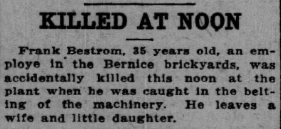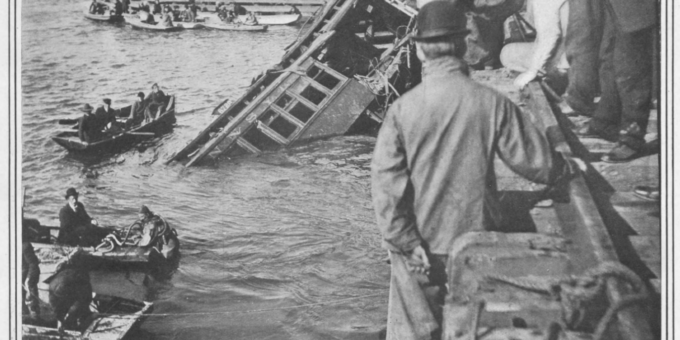
On October 28, 1906, a West Jersey and Seashore Railroad electric train fell off a draw bridge. 53 of the roughly 88 people on the train drowned in what is known as the 1906 Atlantic City Train Wreck.
Hi everyone. This is Elizabeth from Strange Ago, and today we are going to look at the victims of this historical train wreck and read a few first-hand accounts.
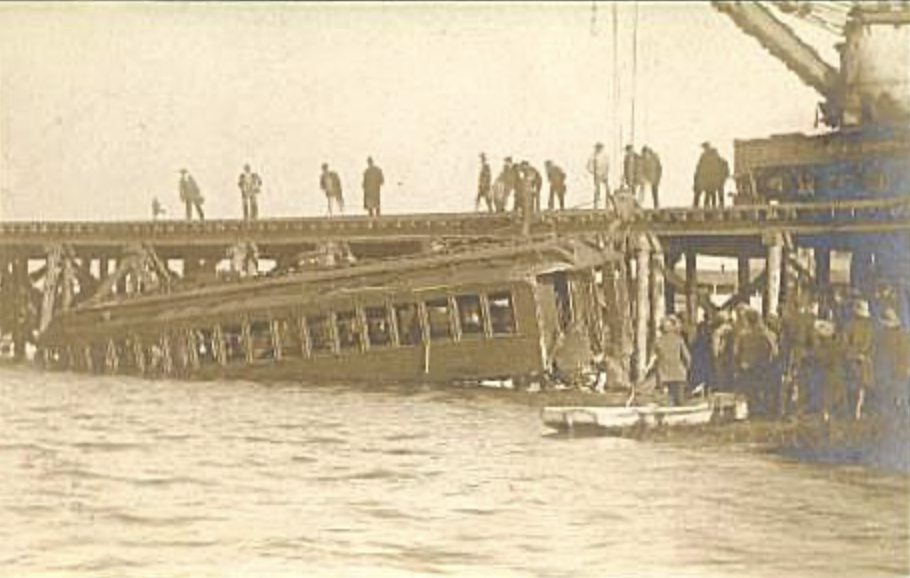
Three Cars In
First, let’s look at one of the initial reports of the accident to better understand what happened and why so many lives were lost:
“The leading car appears to have been the first to leave the rails. It swerved with such force that it pulled the others off, but the train ran on about 100 yards along the trestle until the first and second cars plunged into the water, dragging with them the third car. While the third car was descending the rear portion struck a piece of the abutment, hung for a short time and then slid into the water. But this brief stop saved several lives.” [Source]
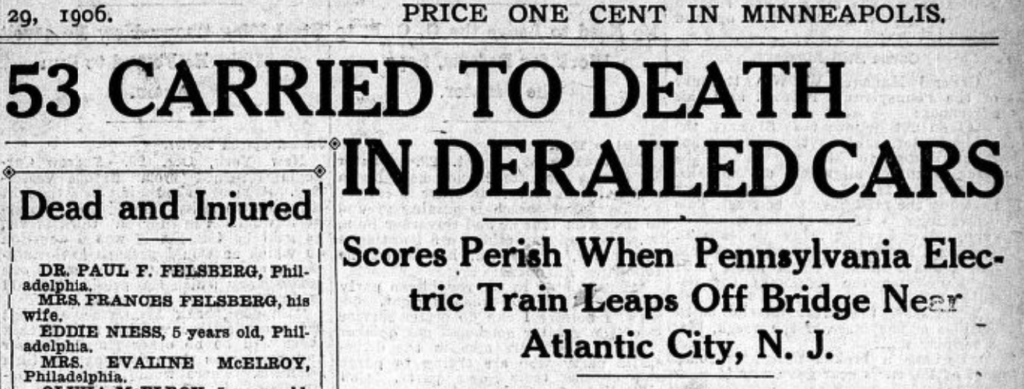
Too Much For The Bridge Tender
The sight and sounds of the accident left the bridge tender mentally incapable of processing the scene at the time of the accident. As reported:
“The man who may be able to tell what caused the accident is Daniel B. Stewart, the bridge tender. Stewart, however, is in no condition to talk. The horror of the accident has temporarily bereft him of his reason. He is 65-years-old.
“He was the only person who witnessed the plunge of the train with its human cargo from a close point of vantage. The scenes which followed caused him to lose his reason, and when he was found hours afterwards he could not tell a rational story.” [Source]

What A Trainman Saw
While the bridge tender was in no shape to act, a trainman, who was 50 yards from the bridge at the time of the accident, tells us:
“I was looking out of my bunk window and noticed the electric express as it entered on the bridge. As I looked I saw it give a twist, and the next instant I saw the whole train go over into the water. At this time the tide had just started to run in. I hurried over to do what I could, and caught two dead bodies and saved one man. As we were all working hard the tide began to rise and the cars, which first showed the tops of their roofs, gradually disappeared. I can well imagine the horrible state of affairs the existed within the cars. I saw a woman’s hand sticking out through the ventilator in the roof of the first car, and the sight almost caused me to faint.” [Source]
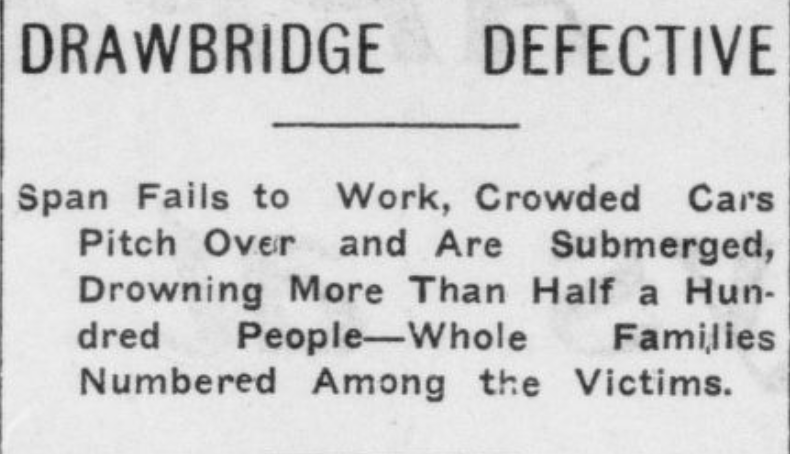
Divers Go Down
Within an hour after the cars sank into the water, divers were on sight. As one article states:
“The news of the disaster was quickly telegraphed to this city, and in less than an hour the work of rescue had begun. At the time of the accident the tide, which rises about ten feet, was running in and the work of the divers was necessarily slow.
“It was not until several hours later that the divers were able to make any progress. Then the awful evidences of the disaster became more apparent. When the two cars struck the waterway, they stood almost on end, and the first man to descend reported that the victims were packed in the lower ends of the submerged cars so tightly that it was difficult to remove them.” [Source]
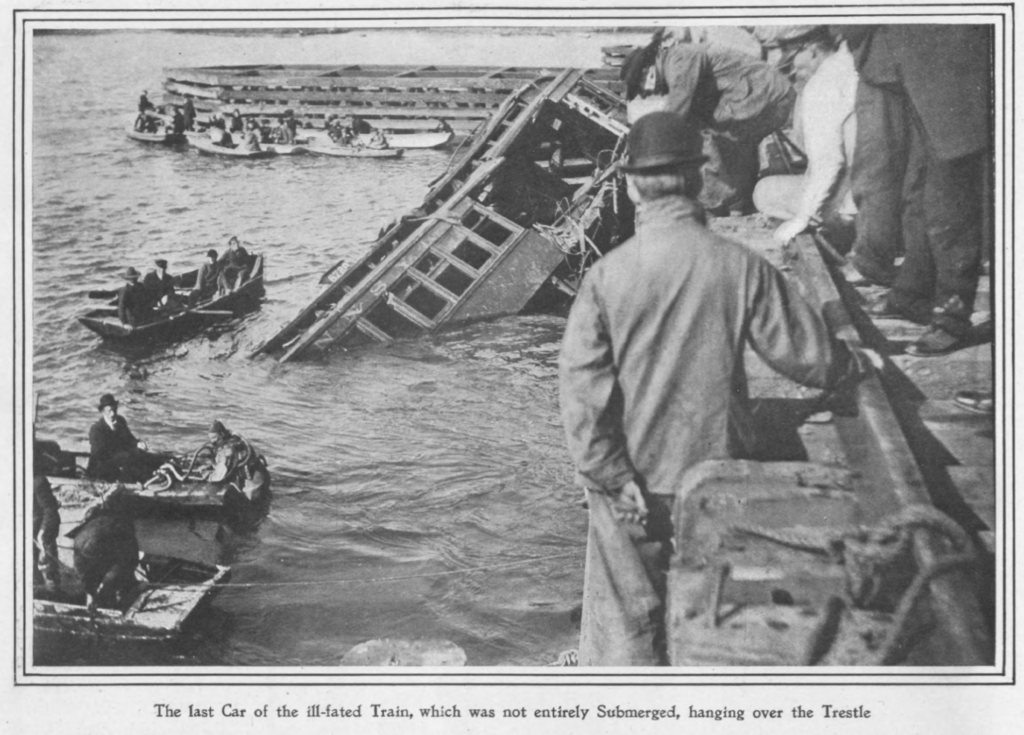
Too Horrible
John W. Cooney was one of the divers who spoke about what he saw. He said:
“I could only stay under a few minutes. It was too horrible. The first two cars have been wrenched apart from each other and are sunk in the water and mud at an angle of about 45 degrees… I peered through a window of the forward car. The face of a dead child, perhaps four-years-old, was pressed against the window. It had a gash across its forehead. I saw the body of a man in some sort of uniform wedged up tightly in one of the package racks. Bodies were piled up in a great heap at the forward end of the car. At the top of the heap I saw the form of a woman. A pair of diamond earrings glistened in her ears. I never saw such a horrible spectacle in my life.” [Source]
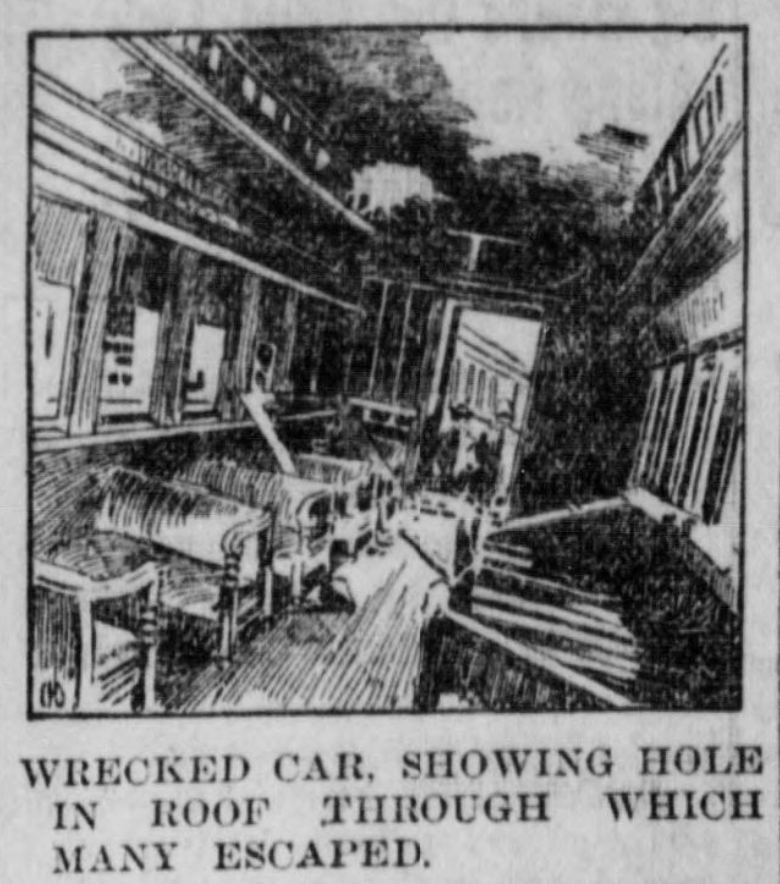
Collapses In The Morgue
As the cars were raised up, the bodies were taken to a makeshift morgue at the Empire Theater. It is at this point that many of the more devastating stories began to be published as family members identified the remains.
Now, I had difficulty reading these reports while I was researching the wreck, but I will do my best to read them out to you now.
“At the morgue the scenes were pathetic, persons who had friends on the ill-fated cars crowded about the room, and with difficulty were restrained from forcing their way into the building. One of the most heartrending incidents was furnished by Frederick Benckert, who lost his entire family, a wife and two children.
“Frederick was not informed of the accident until too late to catch a train, and he hurried here in an automobile. When he saw the bodies of his wife and two little boys lying side by side on the floor, Frederick collapsed and had to be carried from the building. He had intended to come to Atlantic City with his family…, but was unable to get away.” [Source]
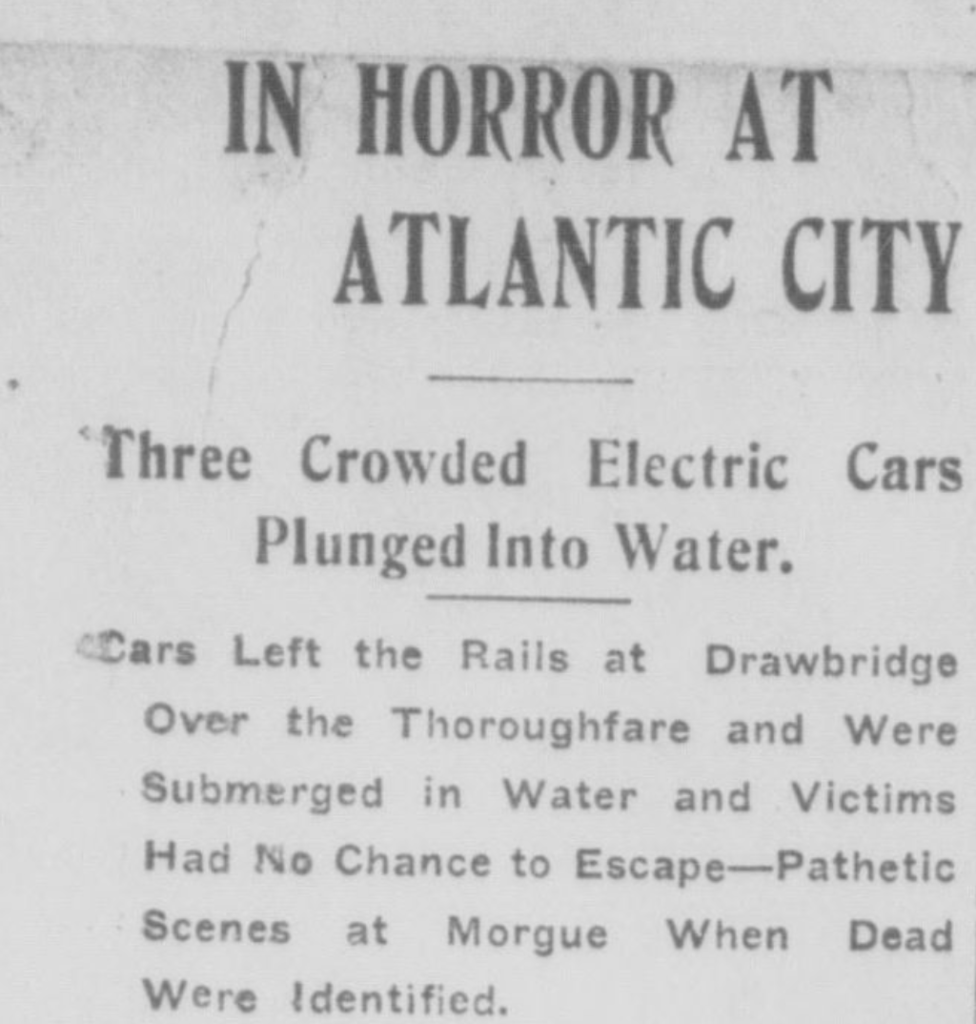
No Home To Go Back To
Frederick was not the only man to lose his family that day. Samuel McElroy was also left behind.
“Among the most pathetic cases was that of Samuel McElroy of Philadelphia, who, after a sleepless night, found his family wiped out by the disaster, his wife and 5-year-old daughter lying dead in the morgue, and 3-year-old boy missing. When the officials in making the record of identification asked for his address, the broken hearted man replied: ‘It was 2029 Green Street, but I shall never return there. God only knows where I shall go.’” [Source]
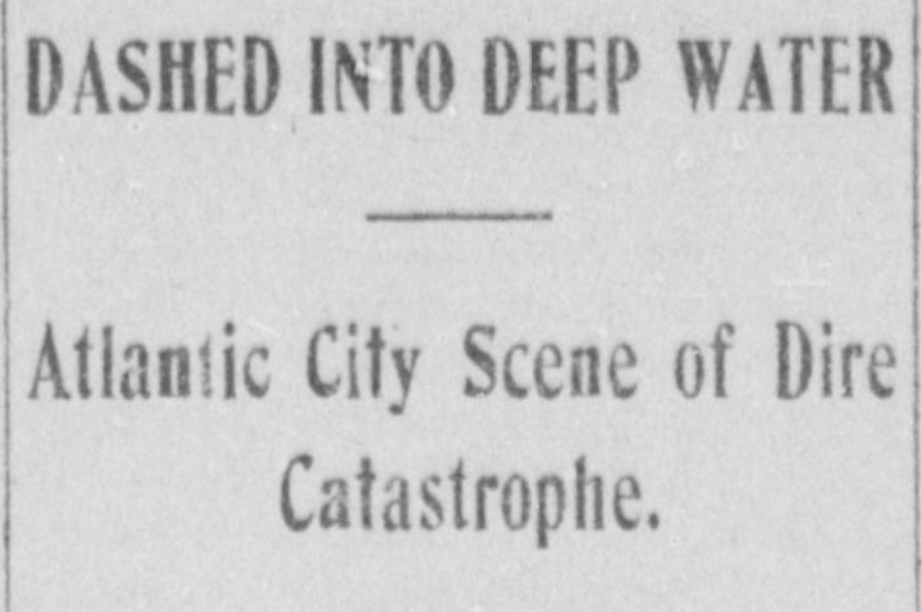
Finds Brother
In another case, a man went to the makeshift morgue to identify his brother and sister-in-law:
“Almost as pathetic was the identification of Dr. Paul Felsberg, Philadelphia, by his brother. From midnight until dawn the brother with friends, pleaded with the police for admittance to the morgue, already satisfied from descriptions furnished by the officials that the physician and his wife, Frances, were among the dead. When the part were admitted they were prepared for the sight that met their gaze – both the physician and his wife were in the morgue.” [Source]

On Her Way to Sing
Another tragic story from the morgue is that of Gertrude Hayes, a 20-year-old from Camden “who was on her way to Atlantic City to sing at the St. James Church. [Her body had originally been misidentified until] her brother, William Hayes, made a positive identification.
“Hayes was so overcome with the horror of the scene that he went into violent hysterics. Foaming at the mouth and his eyes nearly popping from his head, three policemen were required to take him from the room.” [Source]
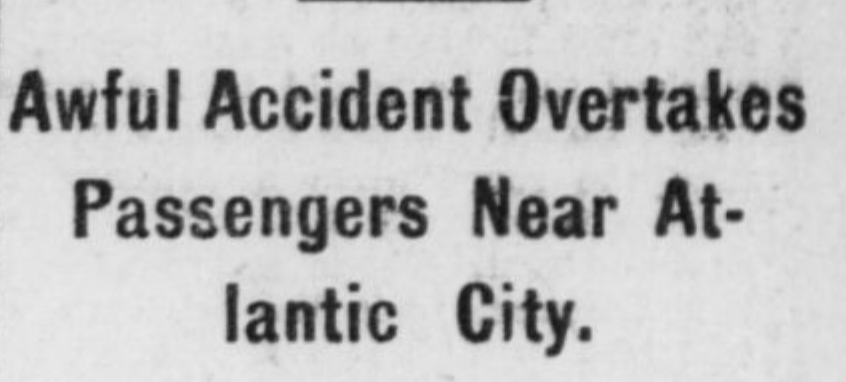
Survivor And Hero
While there are so many terrible stories to be told about this accident, I found a good one to end with.
Survivor Mrs. McDonald gave a firsthand account of her experience in the third car:
“When the cars went overboard, I was looking out of the window. Fortunately I am a good swimmer. The Lord only knows how I broke my way through a window but I did it. As I rose to the surface I thought of my husband and dove down in the faint hope that I could rescue him. I went down and finally grabbed hold of a body. I came up with it, but discovered that I had rescued some other man and he got safely ashore. I dove twice more and each time I brought up a strange man. The fourth time I went down I reached my husband and succeeded in landing him safely ashore.” [Source]

